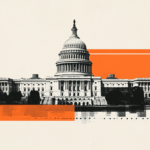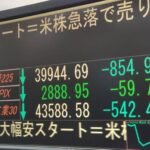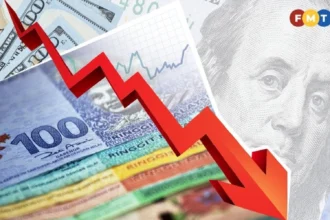In turbulent geopolitical times like these, it is easy to feel anxious about Europe’s place in the world. In the complex, rules-based EU, the problems assailing the bloc can feel overwhelming.
But there is cause for optimism—rooted in concrete data. Already in 2025, Europeans can point to important successes relating to capital markets, investor trust and ensuing geoeconomic opportunities.
Europeans should take a moment to understand and celebrate this progress. They then must consider how to build on it to integrate more deeply and strengthen the role they play globally.
Europe rising
President Donald Trump has unleashed a tariff and trade war which is impacting on the whole world. But it is the US that will suffer the most: its GDP growth is projected to decline. Yet, in the euro area, GDP growth is expected to gradually recover. Given these dynamics, eurozone GDP could reach a similar growth rate as America’s in just two years’ time.
Similarly, European capital markets strengthened considerably in the first months of 2025. Markets’ response to European political decisions has been overwhelmingly positive. European stocks are outperforming global and US stocks, with substantial outflows from US exchange traded funds (investment funds traded on stock exchanges) and substantial inflows into European equivalents. This shift indicates growing investor confidence in Europe’s economic resilience and financial stability. It also shows trust in Europe’s geopolitical strength, democratic values and rule of law.
Reasons for the rise
The new European Commission has been in office only since December 2024, but by March 2025 it had launched three flagship initiatives. These have bolstered the eurozone’s economic position. As a consequence, investors appear keen on moving their money here.
Defence boosted
On defence, the bloc has made available up to €650bn in national spending and €150bn in European loans. The EU has also innovated in the instruments available to assist in this endeavour. For example, €430bn remains in the European Stability Mechanism. Part of these funds could be deployed if the other amounts prove insufficient.
Markets have reacted positively. European government bond yields rose due to anticipated fiscal spending following the announcement in Germany of greater defence and infrastructure investment. German stocks have taken their largest lead over US stocks since 1960; European stocks are outperforming US stocks at record levels.
From the capital markets union to the savings and investment union
In March, the European Commission announced a savings and investment union. This initiative—rebranded and refocused from a (conceptual) capital markets union into a concrete savings and investments—aims to unlock €10trn of savings held in banks and channel them into markets. The European Investment Bank (EIB), European Commission and the ESM are exploring ways to encourage citizens to invest in markets (rather than keep money in bank accounts).
From the green deal to the clean industrial deal
The European Commission is moving from the European green deal towards the clean industrial deal. This has pleased investors thanks to the deal’s emphasis on industrial policy, reducing red tape and deregulation, particularly in green sectors.
Growth in European safe assets
European safe assets—bonds that are issued on a European level—are comparable to US Federal Treasury Bonds in terms of how the markets regard them. They have grown from €400 billion in 2010 to nearly €1,400 billion by the end of 2024—a more than threefold increase. This is a remarkable rise over such a period. European safe assets consist of EU, EIB, ESM and European Financial Stability Facility bonds.
The geopolitics of this are key. European bonds have seen increased participation from global central banks and the books are oversubscribed. Asian investors seem to be showing an increased interest in euro-denominated assets. This is a good sign for the role of the euro as a global currency and the further strength this will lend the EU.
With more volatility and unpredictability in the market, one can expect more diversification in 2025. The euro is the second currency in the world, after the US dollar. Many reserve managers are diversifying where they invest to ensure they are hedged in a risk-prone world. This will mean more investments denominated in euros and other currencies and somewhat fewer dollars. With questions growing about the status of the dollar as a reserve currency, the euro is the first best alternative. A move to a more multipolar currency reserve world—with the dollar, euro, renminbi and others playing a more balanced role—will rebalance power and could support greater financial stability.
*
As the founding father of the EU Jean Monnet said, “Europe will be forged in crisis, and will be the sum of the solutions adopted for those crises”. So, what should today’s European leaders do? They must remain champions of globalism, multilateralism and trade around the globe.
The EU should:
- implement the proposals of the Draghi and Letta reports and do so via the defence white paper, the savings and investment union and the clean industrial deal;
- increase European public goods, especially in the fields of defence, the energy transition and infrastructure security;
- boost European safe assets by deploying unused capacity, like some of the €430bn from the ESM.
Swift action to begin these initiatives has already led to positive market reactions. European decision-makers should build on popularity of the EU and the rising euro to secure more investment—and strengthen the bloc’s position as a weighty global player.
The European Council on Foreign Relations does not take collective positions. ECFR publications only represent the views of their individual authors.


















